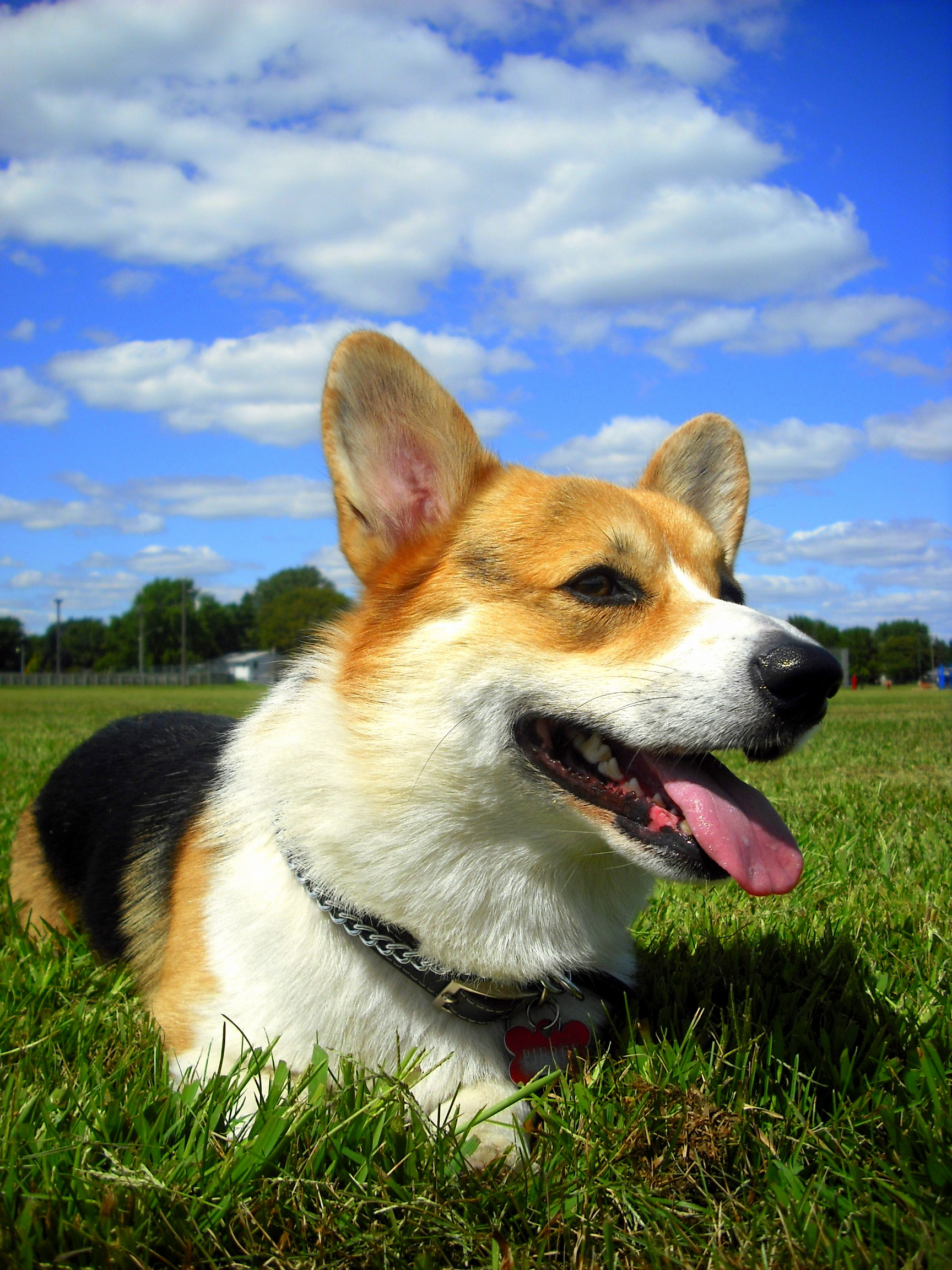Bench Dog
If You Don't Want Your Dog To Dies From Dog Food, You Need To See This!
Discover Truth About Commercial Dog Food Revealed! To Make Sure You Never Find Out!


You would think that giving your pet would be the easiest a part of your responsibilities like a dog owner. Incorrect once again! You'll need to make some decisions and that means you may have to perform some homework. First of all shall we be talking about a puppy or and grownup canine? That will make a difference as to the quantity of pet food required. When considering when it comes to meals, puppies are usually regarded as grown ups at age 1 year at which time you'd change to adult meals. Should there be any doubt or worry about this, or if you want to be safe, talk to your Vet. Your Vet is a fabulous resource for just about any questions you may have and it is usually a great idea to consult with him/her on something concerning your valuable pet. For obvious reasons, the proper feeding of your dog is very important. More than feed and also you put your dog at risk for weight problems and serious health problems. Under feed and you wind up causing a problem dog that chews on toys, books, etc. and takes meals off the counter or desk and it is constantly into the garbage. How often should you nourish your dog? Next choice... normal planned giving or free feeding. Free feeding means that you retain food in the young puppies bowl constantly and that he/she eats whenever their hungry. You will find different ways of thinking regarding totally free feeding. Some Vets really feel this is the best option for your puppy since they are growing rapidly and could need much more meals one day than another. Others suggest giving your puppy about 4 times every day. My personal vote goes with the later. Here is why... Free feeding your dog can be challenging if you have other pets (attempting to keep another domestic pets from it). Then, whenever your puppy becomes a grownup, 1 short 12 months later on, you'll need to re-train your pet to eat only once or twice every day. If you continue to free nourish your pet throughout adulthood, you're setting happens for an obese dog and likely severe health problems. Getting said all this, my suggestion is always to nourish your pup 4-6 times every day. They're small and also have lots of energy. They need to eat often to gas their small bodies and mature correctly. Conserve a normal time agenda for giving, and then leave the meals available for 15-20 minutes. Then go away. If your pup is hungry he'll eat, otherwise he'll have an additional chance in several hours. On adulthood lessen the feedings to at least one-2 times every day. You'll find that there are no absolute solutions to the number of times every day to feed your pet. Like there are so many factors involved in figuring out the solution age, size, type, how much exercise does your dog get, is the canine under a healthy weight now or overweight, how many goodies does heOrshe get each day. Each of these points need to be regarded as before deciding how often to feed your pet. I completely recommend that you talk to... guess who? Say it with me... the vet! He/she can help you setup an ideal agenda for your dog. What about that individuals meals factor? Okay? Or otherwise so alright? The reply is... not so okay. Honestly, moderately, many people food is safe. Nevertheless there are some meals that can be very bad for your pet. For instance it's not a good idea to trim the fat off your meat and nourish it to your canine. This kind of fat overburden can provide your dog pancreatitis which causes chronic stomach discomfort. Ham & bacon are too high sodium and contain an excessive amount of fat. This can cause your dog to possess pancreatitis and, in certain dog breeds, could ultimately result in bloat. Bloat is really a potentially life-threatening situation arising from your pet drinking sinking in the salty food. Large amounts of liver organ may cause vit a toxicity. This is serious since it impacts the muscle tissue and can trigger disfigured bones. Because vitamin A also has an impact on the metabolic process, severe weight reduction and anorexia is also a concern. Any milk products like butter, parmesan cheese, and whole milk are harmful to your dog. They weren't made to eat these types of meals so their bodies can't digest them properly. The consumption of these items could cause bloatedness and looseness of the bowels in your pet. Bones, particularly small bones from chicken and fish could possibly get lodged inside your pets' throat which could trigger choking. Bones can also trigger splinter and tear a dog's organs. Cat meals are much higher in fat and protein than pet food. Just like baby meals, cat and dog food is designed with the particular needs of each pet in mind. The additional body fat isn't healthy for your dog and eating kitty food instead of pet food implies that your pet is lacking essential nutrients for his/her health. This is exactly why it's called Dog Food and Cat Food, not Commercial Dog Food. Chocolate and coffee are toxic to canines and adversely affects their heart and central nervous system. Dark chocolate may cause seizures, coma and ultimately dying. One 1 ounce of baking chocolate can toxin a ten-lb canine. There are different kinds of chocolate some less toxic as others. But let's be honest... does it issue? Not one of them are great for your pooch, so a large no on this treat. Obviously there's the apparent... alcohol and drugs are absolute no no's. You will probably find it humorous to look at a tipsy canine, but I'm certain that you won't see the humour in knowing that the alcohol you gave him put your valuable dog into a coma and possibly led to his dying. There are many other people foods that induce serious health issues for your canine. There is sufficient evidence that many foods are harmful for the pooch the simplest option would be to just NOT feed your dog individuals meals at all. Another bonus for this solution is that you will not have a canine that suggests for meals when you consume at the table. There are so many goodies that have been created specifically for your dog that it truly is just smart that you follow those. What in the event you feed your dog? Which is the best for your dog, dry food or processed food? This is the excellent discussion. There are benefits and drawbacks to each, so... let us make a list: Dried out Pet Food Professionals Assists in keeping canines tooth clean from tartar Much more healthy Canines have much better inhale Easier to shop Easier to manage More cost effective Not as likely to ruin Moist Pet Food Pros Much more healthy proteins included

Bench Dog Consists of less chemical preservatives
Consists of less feed and more moisture keeps a dog hydrated and advantages the urinary tract
Is very flavourful, often the favored flavor for dogs
May be better if your dog has certain health problems
Dried out Dog Food Cons
Not all dry foods are high quality meals
Usually has more preservatives
Wet Pet Food Cons
Sticks on dogs tooth causing teeth problems
Demands more dental remedies
Provides canines bad breath
More expensive
Much less healthy because it includes a higher body fat content and much more water
Once opened up processed food can ruin rapidly
Now that we have reviewed the list of benefits and drawbacks, let me state that nothing is created in stone. Your pet could have a ailment that requires him to consume processed rather than dry. For example, canines which have misplaced their eating tooth or have dental illness may not be able to chew dried out dog food, and could only be able to consume processed food. I fostered a dog once that would only consume her dry dog food with 2 tablespoons of processed food mixed in.
You will find that some specialists promote processed meals for young puppies and change to dried out food for grownup canines. The obstacle with this particular is that it's difficult to help make the change.
You might have a dog that's a really fussy eater or one that gulps his food using the pace of sunshine after which tosses up. These canines need your help. Exercise an agenda together with your Vet. This short article was not designed to have all the answers. It had been meant to give you some considerations. It is not as simple as Inchgrab a tote of dog food from the store" and we're all set. As a accountable pet parent, you've got some considerations. Now, speak to your Vet, ask your questions (be sure to request the explanation at the rear of the idea), and with each other construct your strategy.
Tags : How to Bench Dog,Guide Bench Dog,Secret Bench Dog,Quick Bench Dog,How can you Bench Dog,Amazing Bench Dog,To find Bench Dog,To cure Bench Dog,Review Bench Dog,Bonus Bench Dog